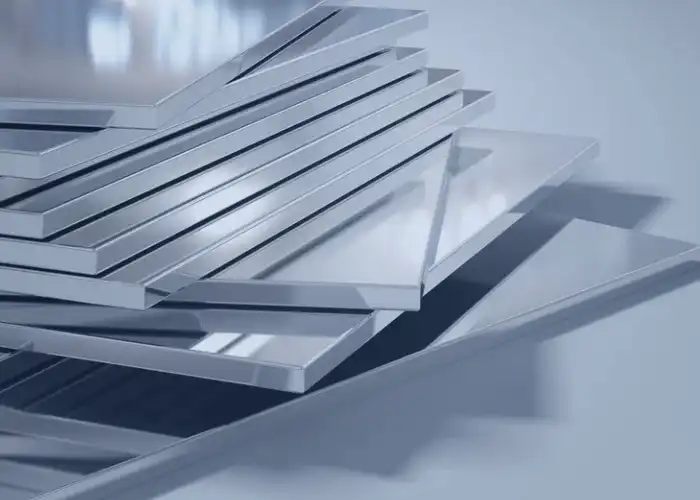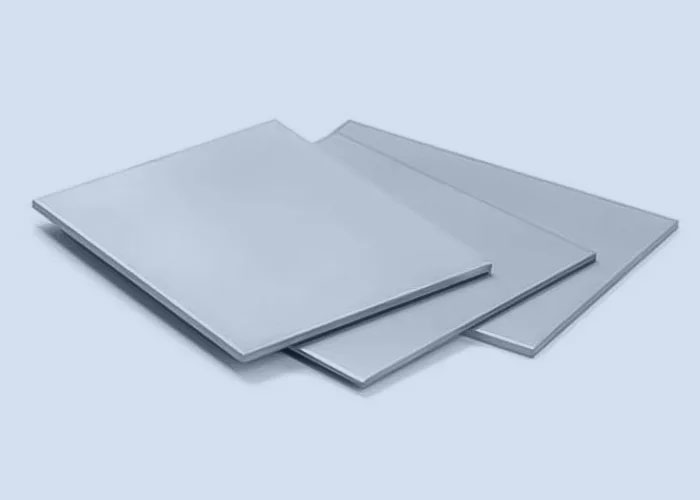Aluminium Plate

Aluminium Plate
Aluminum plates are versatile, lightweight materials available in a wide range of finishes, shapes, and alloys. At HZW, we supply premium-grade aluminum sheets plates with thicknesses ranging from 0.2mm to 6mm, making them thinner than aluminum plates but thicker than foil. Our product range includes:
- Mill finish, mirror finish, diamond plate, expanded, perforated, and painted aluminum sheets
- Clad or bare aluminum sheets, available in color-coated or anodized surface treatments
- Multiple shapes: coil-rolled sheets, stripes, square sheets, rectangular panels, and round discs/circles
- Alloy series: 1000 to 8000 series (1xxx to 8xxx), covering commercial-pure to high-performance grades
Thanks to their excellent strength-to-weight ratio, natural corrosion resistance, and formability, aluminum sheets are used in a wide variety of industries and applications, including:
- Aerospace and aircraft manufacturing
- Automotive and transportation
- Cryogenic and chemical storage
- Beverage packaging (cans and containers)
- Construction and architecture (roofing, siding, gutters)
- Tooling, molds, and general fabrication
Custom Aluminum Plate Solutions from HZW
At HZW, we offer a broad selection of standard sizes and thicknesses, along with custom cut-to-size aluminum plates tailored to your exact specifications. Whether you need lightweight material for structural use or corrosion-resistant alloys for harsh environments, we deliver reliable aluminum sheet metal solutions at competitive prices.
Contact us today for pricing, technical support, and fast delivery from a trusted aluminum sheet plate supplier in China.
Aluminium Plate Grades
Aluminium Plates Specifications
HZW supplies high-quality aluminum plates in a wide range of grades, thicknesses, surface finishes, and tempers to meet diverse industrial and commercial application needs.
Available Aluminum Grades:
We offer aluminum plates in various alloy grades, each tailored to specific applications:
- 1100 – Excellent corrosion resistance and workability
- 3003 – Good formability and moderate strength
- 5052 – Superior corrosion resistance and weldability
- 6061 – High strength, good machinability, ideal for structural use
- 7075 – Exceptional strength, widely used in aerospace
Thickness Range:
From 0.1mm to 30mm, suitable for applications ranging from lightweight cladding to heavy-duty structural components.
Custom Width & Length Options:
Aluminum sheets are available in various sizes—from a few millimeters wide to several meters in length, supporting both standard and custom dimensions based on project requirements.
Surface Finishes:
Choose from multiple surface treatment options for functional and aesthetic needs:
- Mill Finish
- Anodized Finish
- Brushed Finish
- Color Coated / Painted Finish
Available Tempers:
We provide aluminum plates in different tempers, indicating the material’s hardness and mechanical properties:
- O (Annealed) – Soft and highly formable
- H14, H16, H18 – Increasing levels of hardness and strength
- H32 – Balanced strength and formability
Whether you’re sourcing aluminum for construction, aerospace, automotive, marine, or packaging applications, HZW offers the right grade, size, and finish to match your requirements.
Contact us today for customized aluminum plate solutions and competitive pricin
Why Choose Us?
- Advanced production facilities and in-house cutting services
- ISO-certified quality assurance and full traceability
- Expert support for material selection and custom orders
- Competitive pricing direct from factory
Request a quote today for your aluminum sheet or plate needs—we deliver quality you can trust.
Different Aluminium Plates Applications & Useage
Aluminum plate is the most widely used form of aluminum, playing a vital role in nearly every major industry due to its lightweight, corrosion resistance, and high versatility.
Packaging Industry
Aluminum plates are used in the production of cans, containers, and flexible packaging due to their excellent formability and barrier properties.
Transportation Sector
In automotive and commercial vehicle manufacturing, aluminum plate is used for car body panels, trailer siding, and structural components, offering a strong yet lightweight solution that improves fuel efficiency.
Everyday Applications
From home appliances to cookware, aluminum sheet is a popular choice thanks to its thermal conductivity, safety, and ease of cleaning.
Building & Construction
In the construction industry, aluminum sheets are formed into products such as siding, gutters, roofing panels, awnings, and carports, valued for their durability and resistance to the elements.
Whether used for industrial strength or aesthetic appeal, aluminum sheet metal offers unmatched versatility, making it a top material choice across countless applications.
Explore custom aluminum plate options at HZW—available in a full range of alloys, finishes, and dimensions.
Aluminium Plates: The Ultimate Guide
The aluminum plate is a popular metal that exhibits uniform thickness and are formed from ingots or coils of aluminum.
So what’s the grade? What’s the production process of these plates?
In this guide, we will show you details about all.
How Aluminium Plates Are Made?
1. Bauxite Mining
Aluminum begins as bauxite ore, which is rich in aluminum oxide (Al₂O₃).
Bauxite is mined, usually from open-pit mines in countries like Australia, Brazil, and Guinea.
2. Alumina Refining (Bayer Process)
The bauxite is refined using the Bayer Process:
Crushed bauxite is mixed with sodium hydroxide.
Under heat and pressure, the aluminum oxide dissolves, forming alumina (Al₂O₃) solution.
Insoluble impurities (red mud) are removed.
Alumina is precipitated out and then calcined at high temperatures to create a white powder.
3. Electrolytic Reduction (Hall–Héroult Process)
Alumina is converted to pure aluminum metal by electrolysis:
Alumina is dissolved in molten cryolite.
Electric current is passed through the mixture in large reduction cells.
Pure molten aluminum sinks to the bottom and is collected.
4. Casting
The molten aluminum is cast into large slabs (ingots) or billets.
These slabs form the raw material for sheet production.
5. Hot Rolling
The slabs are heated to ~500°C and passed through hot rolling mills.
This reduces the thickness and elongates the metal into thick sheets or coils.
6. Cold Rolling
The hot-rolled aluminum is cooled and then passed through cold rolling mills to reach final thickness.
Cold rolling improves surface finish, strength, and dimensional accuracy.
Thickness can range from several mm down to fractions of a mm (foil).
7. Heat Treatment (Optional)
Some aluminum sheets undergo annealing or other heat treatments to adjust hardness or ductility.
8. Surface Finishing
Sheets may be:
Anodized (for corrosion resistance and appearance),
Coated, painted, or embossed, depending on the application.
9. Cutting and Packaging
Sheets are cut into standard or custom sizes.
Finally, they are stacked or coiled, packed, and shipped for industrial or commercial use.
What Is The Packaging Standard of Aluminium Plate?
- Standard export sea packaging:
Waterproof Paper Winding+PVC Film+Strap Banding+Wooden Pallet or Wooden Case; - Customized packaging as your request (Logo or other contents accepted to be printed on the packaging);
- Other special packaging will be designed as customer’s request;
Eye to wall and eye to sky are both available; - By International Express: DHL/UPS/FEDEX/EMS and our own express line;
- By air or By sea;
- Shipping port: Shanghai, Ningbo or as your request.












